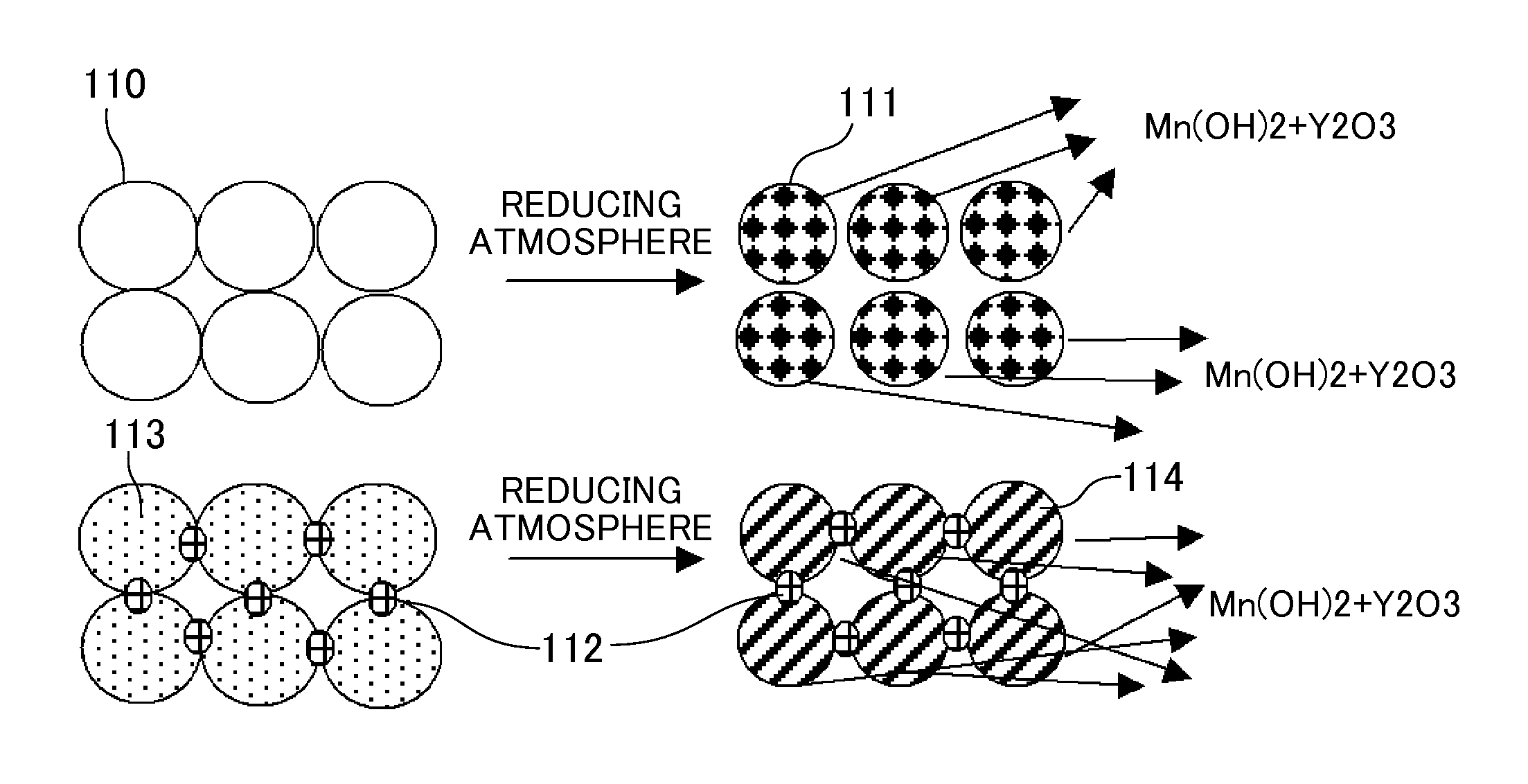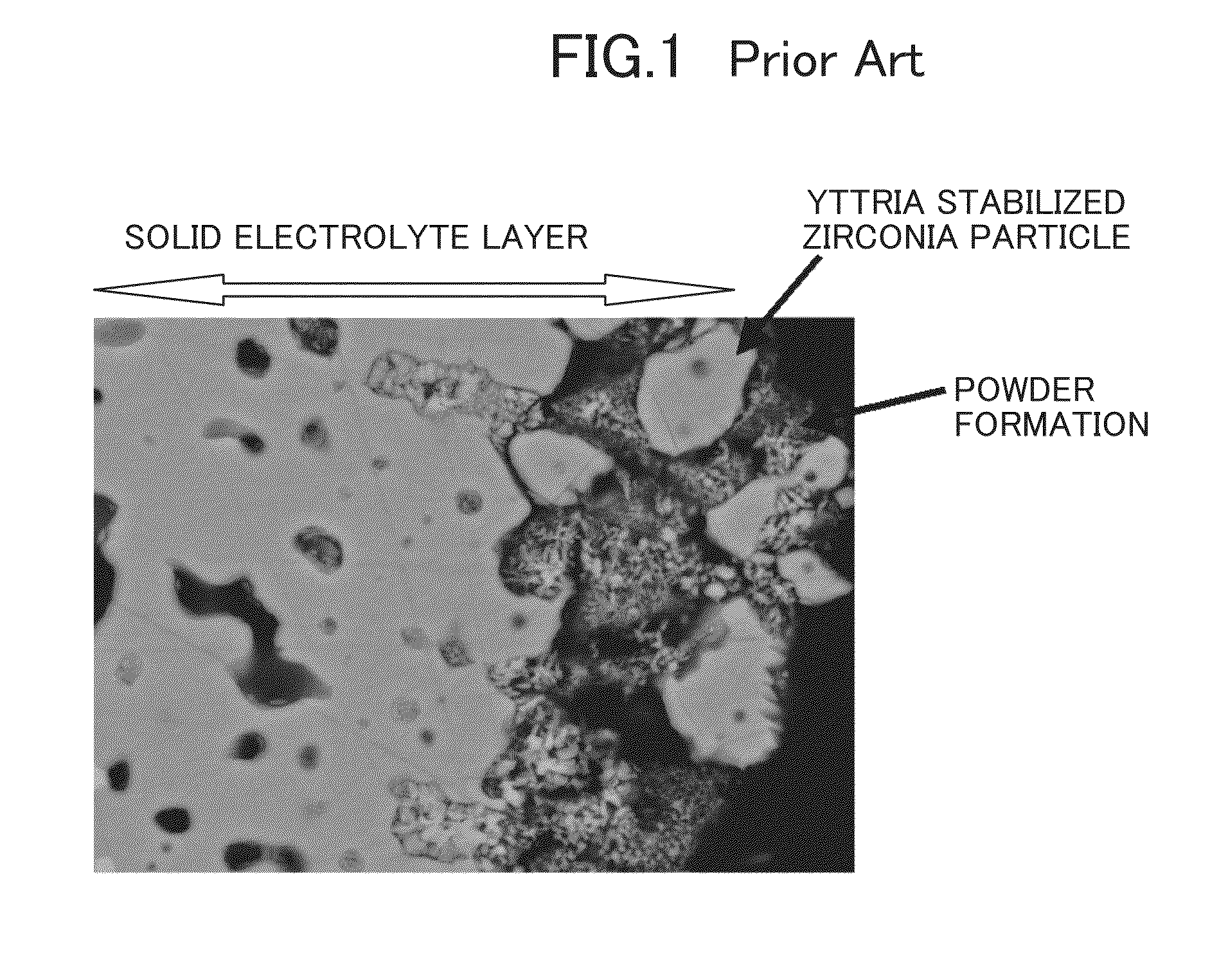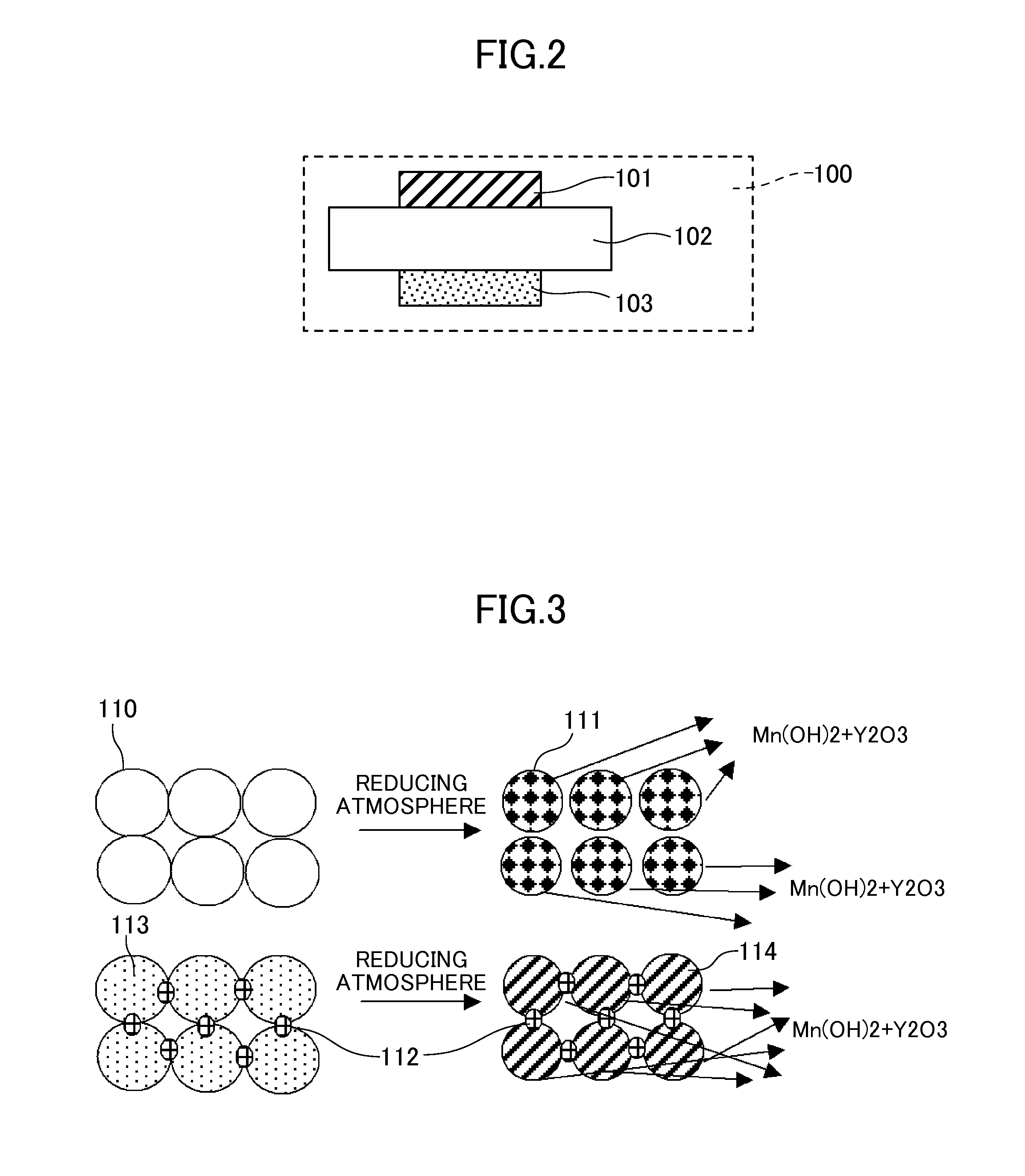Solid electrolyte material and solid oxide fuel cell provided with same
a solid electrolyte and fuel cell technology, applied in the direction of cell components, final product manufacturing, sustainable manufacturing/processing, etc., can solve the problems of inability to extract electricity and inability to generate electricity, and achieve the effect of suppressing the extraction of stabilizers, suppressing the extraction of yttria, and improving the oxygen ion conductivity of solid electrolyte materials
- Summary
- Abstract
- Description
- Claims
- Application Information
AI Technical Summary
Benefits of technology
Problems solved by technology
Method used
Image
Examples
example 1
[0034]A test conducted by fabricating a cell of the type shown in FIG. 2 is described. A ZrO2 raw material (average particle diameter: 0.3 μm), a Y2O3 raw material (average particle diameter: 0.3 μm), and a CeO2 raw material (average particle diameter: 0.3 μm) were weighed to give a 10Y0.5CeSZ composition represented by the general formula of 89.5 mol % (ZrO2)-10 mol % (Y2O3)-0.5 mol % (CeO2). These raw materials were wet blended in an ethanol solvent for 50 hr, and dried and ground. Then, the blend was sintered at 1200° C. The sintered material was ground into a powder. Then, 5 wt % of a binder PVA was added to the powder, followed by mixing in a mortar. The powder containing the PVA was press molded at 50 MPa, and sintered at 1450° C. for 5 hr. Thus, a dense solid electrolyte layer having a 10Y0.5CeSZ composition was obtained. After the layer was polished to a thickness of about 200 μm, a film of LSM (average particle diameter: 2 μm) was formed as an oxygen electrode layer by the ...
example 2
[0035]Example 2 was conducted in the same manner as in Example 1, except that a dense solid electrolyte layer having a 10Y0.5CeSZ1Al composition was obtained as follows. Specifically, together with a binder PVA, Al2O3 in an amount equivalent to 1 mol % relative to the total amount of substances (total molar amount) of the zirconia, the yttria, and the lanthanoid oxide in the solid electrolyte material was mixed with a powder having the 10Y0.5CeSZ composition represented by the general formula of 89.5 mol % (ZrO2)-10 mol % (Y2O3)-0.5 mol % (CeO2).
example 3
[0036]Example 3 was conducted in the same manner as in Example 2, except that a dense solid electrolyte layer having a 10Y0.5CeSZ1.5Al composition was obtained as follows. Specifically, with a 10Y0.5CeSZ composition represented by the general formula of 89.5 mol % (ZrO2)-10 mol % (Y2O3)-0.5 mol % (CeO2), Al2O3 was mixed in an amount equivalent to 1.5 mol % relative to the total amount of substances (total molar amount) of the zirconia, the yttria, and the lanthanoid oxide in the solid electrolyte material.
PUM
| Property | Measurement | Unit |
|---|---|---|
| thickness | aaaaa | aaaaa |
| thickness | aaaaa | aaaaa |
| particle diameter | aaaaa | aaaaa |
Abstract
Description
Claims
Application Information
 Login to View More
Login to View More - R&D
- Intellectual Property
- Life Sciences
- Materials
- Tech Scout
- Unparalleled Data Quality
- Higher Quality Content
- 60% Fewer Hallucinations
Browse by: Latest US Patents, China's latest patents, Technical Efficacy Thesaurus, Application Domain, Technology Topic, Popular Technical Reports.
© 2025 PatSnap. All rights reserved.Legal|Privacy policy|Modern Slavery Act Transparency Statement|Sitemap|About US| Contact US: help@patsnap.com



